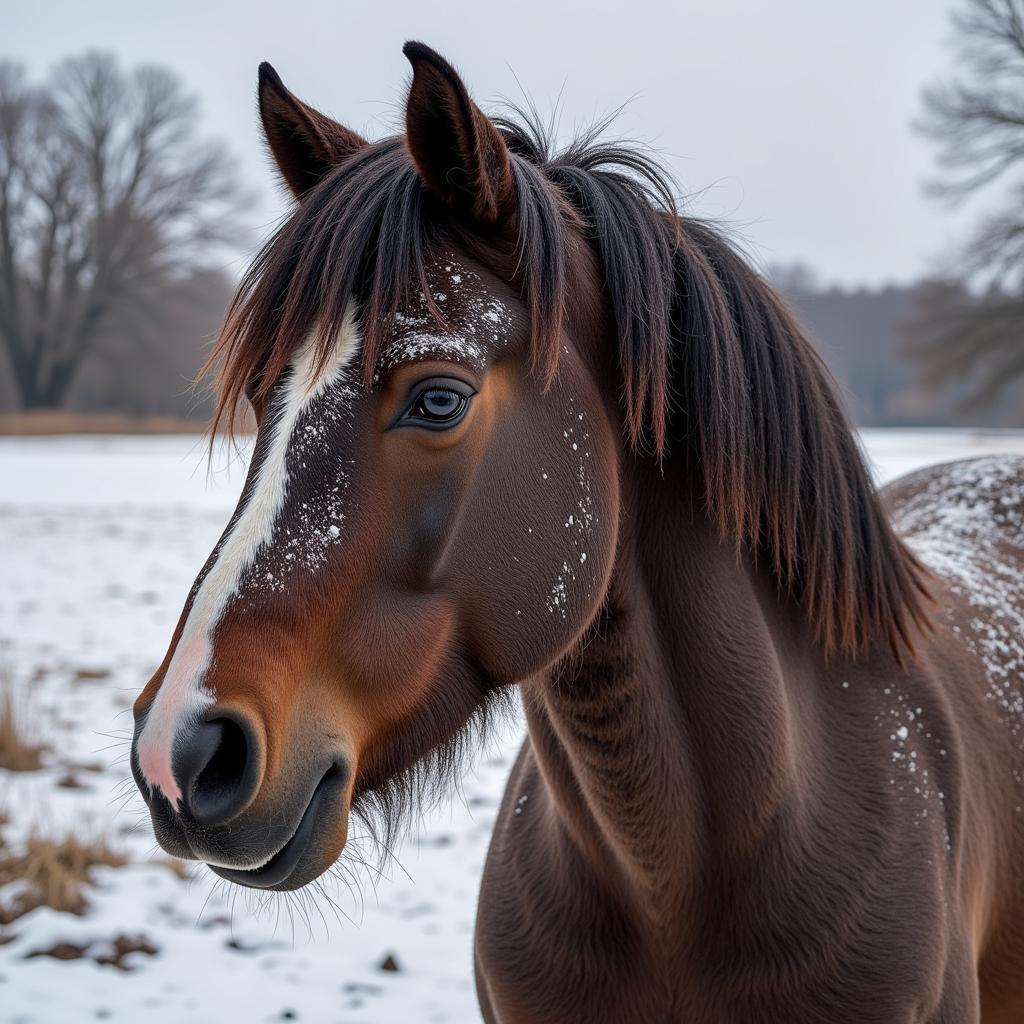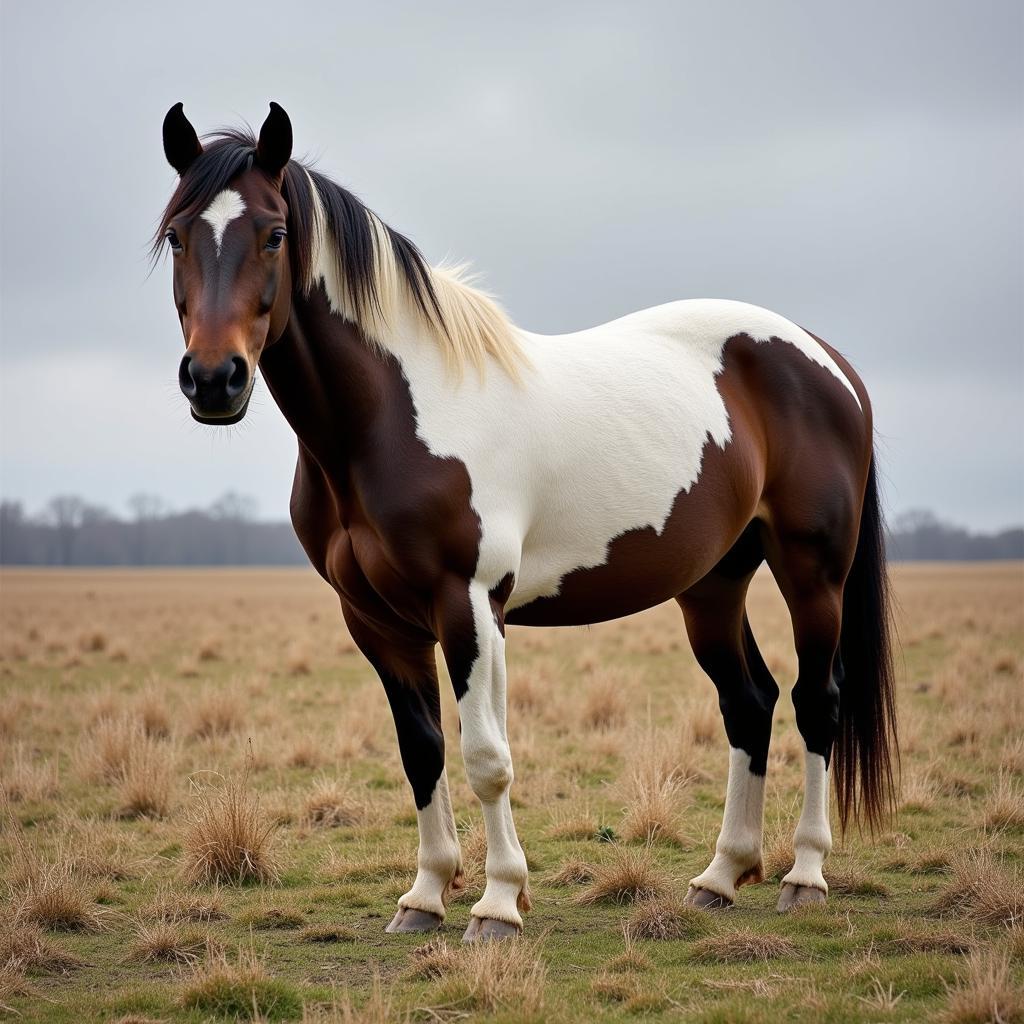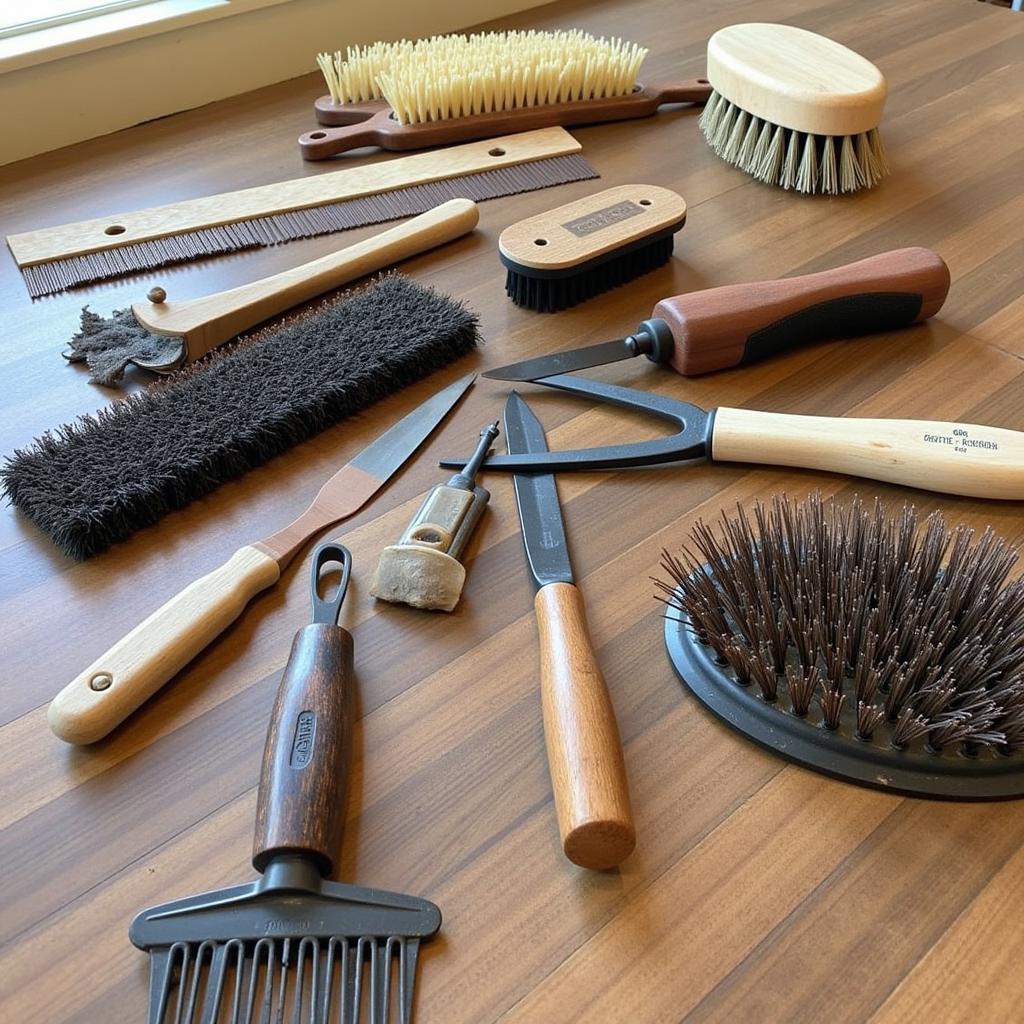The term “Sleazy Horse” might seem confusing at first, especially when you picture the grace and beauty associated with these animals. However, in the equestrian world, it doesn’t carry the same negative connotation as in common language. Instead of referring to morals or behavior, “sleazy” in this context describes a specific condition of a horse’s coat.
 Horse with a Sleazy Winter Coat
Horse with a Sleazy Winter Coat
What Does “Sleazy Horse” Actually Mean?
When we talk about a “sleazy horse,” we’re actually describing the appearance of their coat during the shedding season, particularly in the spring. It refers to the period when a horse is transitioning from their thick winter coat to a shorter, sleeker summer coat. During this time, the old hair loosens but doesn’t shed completely, resulting in a somewhat unkempt, scruffy look. The coat might appear dull, slightly matted, and generally untidy.
 Horse Shedding Winter Coat
Horse Shedding Winter Coat
This “sleazy” phase is a natural part of a horse’s life cycle and doesn’t necessarily indicate any health problems. It’s simply a visual indicator of the shedding process.
Factors Influencing a Sleazy Coat
Several factors can contribute to a horse having a particularly prominent “sleazy” appearance:
- Breed: Some breeds, especially those originating from colder climates, tend to grow thicker winter coats, making their “sleazy” phase more noticeable.
- Nutrition: A horse’s diet plays a crucial role in coat health. Nutritional deficiencies can lead to a dull, dry coat that sheds poorly.
- Overall Health: Underlying health conditions can also affect a horse’s coat.
- Sunlight: Increased exposure to sunlight stimulates shedding.
 Grooming Tools for a Shedding Horse
Grooming Tools for a Shedding Horse
Managing a Sleazy Coat
While a “sleazy” coat is a natural part of a horse’s cycle, there are ways to manage it and help your horse transition more comfortably:
- Regular Grooming: Frequent grooming with a horse hair sheets and curry comb helps remove loose hair and stimulates circulation, promoting a healthy coat.
- Balanced Diet: Provide a balanced diet rich in essential fatty acids, vitamins, and minerals to support coat health.
- Blanket Use: Consider using a lightweight horse sleazy hood to keep the horse clean and minimize the spread of loose hair.
- Consult Your Veterinarian: If you notice any unusual shedding patterns or skin irritations, consult your veterinarian to rule out any underlying health issues.
“Sleazy Horse” vs. “Poor Condition”
It’s important to distinguish between a horse experiencing a natural “sleazy” coat phase and a horse in poor condition. A “sleazy” coat is a temporary visual characteristic, while a horse in poor condition may exhibit other symptoms like weight loss, lethargy, or changes in appetite.
Conclusion
Understanding the term “sleazy horse” can help you interpret your equine companion’s needs better. While the term might sound unusual, it simply refers to a natural shedding phase. By implementing proper grooming practices, providing a balanced diet, and monitoring your horse’s overall health, you can help them transition through this phase comfortably and maintain a healthy, vibrant coat year-round.
For any questions or concerns about your horse’s coat or overall health, don’t hesitate to contact us at 0772127271 or [email protected]. Our team at Justus Horses USA is dedicated to providing you with the best guidance and resources for your equine partners. You can also visit us at QGM2+WX2, Vị Trung, Vị Thuỷ, Hậu Giang, Việt Nam. We have a 24/7 customer service team available.